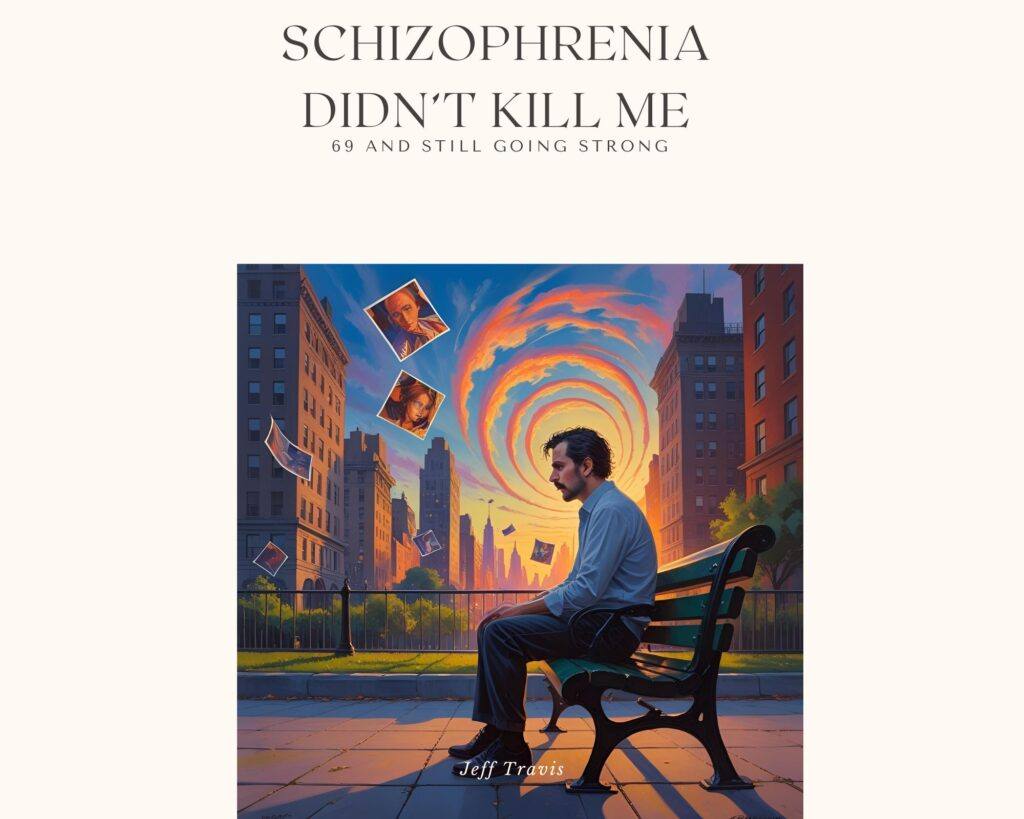
Introduction: What Is HPPD?
Hallucinogen Persisting Perception Disorder (HPPD) is a rare but serious condition that causes persistent visual disturbances following the use of hallucinogenic drugs. While many users of psychedelics experience temporary changes in perception during or shortly after a trip, individuals with HPPD continue to experience these effects long after the drug has left their system—sometimes for months or even years.
In this post, we will cover:
- The symptoms of HPPD
- How it differs from normal psychedelic flashbacks
- Causes and risk factors
- How HPPD is diagnosed and treated
If you’re searching for terms like “visual snow after LSD”, “HPPD symptoms list”, or “are psychedelic flashbacks permanent?”—you’re in the right place.
What Is Hallucinogen Persisting Perception Disorder (HPPD)?
HPPD is a perceptual disorder defined by the recurrent or continuous presence of visual hallucinations or distortions, particularly after the use of hallucinogenic substances such as:
- LSD (Lysergic acid diethylamide)
- Psilocybin mushrooms
- MDMA (Ecstasy)
- Mescaline
- Cannabis (in some cases)
- Synthetic cannabinoids
These visual symptoms are not due to ongoing substance use, a psychotic disorder, or a neurological disease. Instead, HPPD is considered a stand-alone neuropsychological condition with visual symptoms resembling those experienced during a psychedelic trip—but without the altered thinking, emotion, or ego loss.
SEO Keywords: HPPD symptoms, visual aftereffects of psychedelics, persistent visual distortions
Core Symptoms of HPPD
The symptoms of HPPD can vary from person to person, but they almost always involve visual distortions or anomalies. These symptoms may occur episodically (Type 1 HPPD) or persist chronically (Type 2 HPPD).
Below is a detailed overview of the most commonly reported HPPD symptoms.
1. Visual Snow
Visual snow refers to a grainy or static-like overlay that appears in your visual field, even in well-lit environments. It’s often compared to the static you might see on an untuned television screen.
- Appears as white, black, or colored dots
- Present in both eyes
- Worsens in dark settings or after focusing on something
Keywords: visual snow after psychedelics, HPPD static vision, grainy vision LSD
2. Afterimages (Palinopsia)
Afterimages are lingering visual impressions that remain after the original image is gone. For example, if you look at a lamp and then turn away, you may still see the lamp’s shape in your field of vision for several seconds or longer.
- Positive afterimages: Replication of an object’s shape
- Negative afterimages: Color-inverted silhouettes
This symptom can be incredibly disorienting and is commonly reported among those with HPPD.
SEO Tip: Include “HPPD afterimages”, “persistent visual trails”, “palinopsia and psychedelics”
3. Light Trails and Visual Tracers
This symptom involves seeing light trails following moving objects—like cars, people, or lights. Known as visual tracers, these trails resemble the long-exposure photographs often seen in psychedelic artwork.
- Most visible in low-light environments
- Can cause issues with depth perception
- Sometimes seen as blurred motion
Relevant phrase: “HPPD light trails”, “tracers after LSD”
4. Halos and Starbursts
People with HPPD often report halos (glowing outlines) around objects and starbursts (radiating light patterns) around lights.
- Common around headlights and streetlamps
- Can interfere with night driving
- Often mistaken for vision problems like astigmatism
While these symptoms can also occur in common eye disorders, they take on a more psychedelic or exaggerated quality in HPPD.
Suggested keywords: “halo vision HPPD”, “lights look weird after drugs”
5. Enhanced Colors and Motion Sensitivity
Colors may appear overly vivid, bright, or saturated—even in normal settings. Motion can feel exaggerated or “dragged,” almost like watching a poorly rendered video game.
- Synesthesia-like effects can sometimes persist
- Sensory overload is common in crowded or dynamic environments
SEO value: “color enhancement after psychedelics”, “HPPD motion sensitivity”
6. Tinnitus and Auditory Changes
Although HPPD is primarily visual, many people also report ringing in the ears, muffled hearing, or increased sensitivity to sound (hyperacusis).
- Tinnitus can become chronic
- Not everyone experiences auditory symptoms
Keywords: “HPPD tinnitus”, “hearing changes after psychedelics”
7. Anxiety and Depersonalization
The visual symptoms of HPPD are often accompanied—or made worse—by anxiety, depersonalization, or derealization. These are not core symptoms of HPPD, but they are common secondary effects caused by the stress and confusion the condition brings.
- Feeling disconnected from reality
- Fear that symptoms will never go away
- Panic attacks
SEO clustering: “HPPD and anxiety”, “depersonalization after LSD”, “feeling unreal after tripping”
Types of HPPD: Type 1 vs. Type 2
Type 1 HPPD
- Symptoms occur in brief episodes
- Often triggered by stress, fatigue, or drug use
- Symptoms fade over time or are manageable
Type 2 HPPD
- Persistent, continuous visual disturbances
- Can severely impact daily functioning
- More likely to require clinical treatment
Related search terms: “Type 1 vs Type 2 HPPD”, “how long does HPPD last?”
What Causes HPPD?
HPPD is still poorly understood, but research points to neurobiological changes in visual processing pathways in the brain—likely involving serotonin receptors (especially 5-HT2A).
Common risk factors:
- Use of LSD, psilocybin, or MDMA
- High doses or frequent use of hallucinogens
- Genetic predisposition to anxiety or visual disorders
- Pre-existing mental health conditions
- Traumatic or overwhelming trips
Interestingly, HPPD can occur even after a single use of psychedelics.
Use SEO keywords like “causes of HPPD”, “risk factors for persistent hallucinations”
How Is HPPD Diagnosed?
HPPD is typically diagnosed by a psychiatrist, neurologist, or optometrist through:
- A detailed medical and drug history
- Ruling out eye diseases, neurological conditions, or psychotic disorders
- Sometimes neuroimaging or EEG (to exclude seizures)
Internal link suggestion: “What Happens in the Brain During a Psychedelic Trip?”
Treatment for HPPD: Is There a Cure?
Unfortunately, there is no guaranteed cure for HPPD—but many people do experience partial or full remission over time. Treatment generally focuses on symptom management and improving quality of life.
Common treatments include:
1. Medications:
- Clonazepam: Often effective for reducing visual symptoms and anxiety.
- Lamotrigine: An anticonvulsant that may help with visual distortions.
- SSRIs: Used cautiously; may worsen symptoms for some individuals.
Keywords: “best medication for HPPD”, “does clonazepam work for HPPD?”
2. Lifestyle Adjustments:
- Avoid all psychoactive substances (including cannabis and caffeine)
- Use blue light filters or tinted glasses
- Get consistent sleep, hydration, and nutrition
3. Therapy and Support:
- CBT (Cognitive Behavioral Therapy) to manage anxiety and depersonalization
- Peer support from HPPD forums and mental health groups
Living with HPPD: Coping Strategies and Hope
Although HPPD can be deeply distressing, it is manageable. Many people learn to live with the symptoms or experience improvement over time.
Helpful coping strategies:
- Mindfulness and grounding exercises
- Avoid obsessively checking symptoms
- Keep a symptom journal to track triggers and progress
- Connect with others going through the same experience
SEO tip: “how to cope with HPPD”, “HPPD success stories”, “living with visual snow”
FAQs About HPPD
Q: Can HPPD go away on its own?
A: Yes, some people experience spontaneous recovery within months. Others may need medical or psychological intervention for long-term symptoms.
Q: Can weed or alcohol trigger HPPD?
A: Yes, cannabis is a common trigger for HPPD symptoms or relapses. Alcohol is less likely to trigger it, but individual responses vary.
Q: Is HPPD a form of psychosis?
A: No. HPPD is not a psychotic disorder. People with HPPD remain fully aware that their visual experiences are not real.
Conclusion: Raising Awareness of a Rare But Real Disorder
HPPD is a little-known but life-altering condition that affects perception long after the drug has worn off. With the rise of interest in psychedelic therapy, awareness of hallucinogen side effects like HPPD is more important than ever.
If you or someone you know is dealing with symptoms of HPPD, you’re not alone—and help is available.
Recommended Resources
- The Visual Snow Initiative
- Erowid Experience Vaults: HPPD Stories
- MAPS (Multidisciplinary Association for Psychedelic Studies)
“Schizophrenia Didn’t Kill Me” to purchase click here
Schizophrenia Didn’t Kill Me is a raw, unfiltered journey through madness, misdiagnosis, and survival — told by a man who lived it and lived to write the truth. From locked wards and medication fog to moments of clarity and breakthrough, Jeff Travis shares his decades-long battle with schizophrenia in a voice that’s equal parts brutal, insightful, and unexpectedly hopeful. This isn’t a tale of victimhood — it’s a story of grit, reinvention, and reclaiming a life that the system tried to write off. If you’ve ever struggled with mental illness — or love someone who has — this book will crack you open and leave you stronger.






